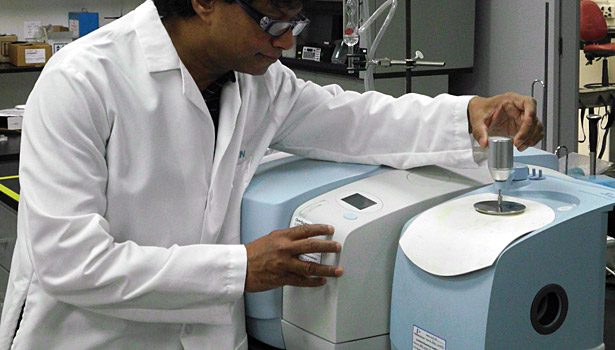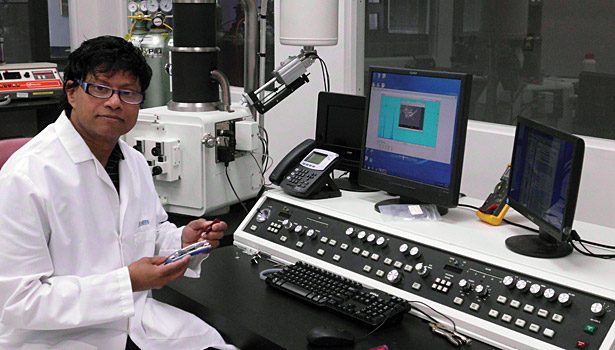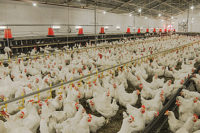The use of bio-waste and other alternatives to produce green adhesive products is growing in popularity due to increased industry regulations and a steady public opinion to support green products. Instead of sending massive amounts of bio-waste materials to landfills, companies are starting to reuse waste material in alternative ways, some of which are very economical and sustainable.
| Jump to: |
One alternative includes the use of these materials to fuel small-scale combustion engines, which can generate both heat and electricity. Another option involves using anaerobic digestion to break down the chemical compounds to produce useful raw materials. Some waste materials can even be reused to develop large amounts of renewable and even biodegradable items, such as components for tires, wood for decking, polymers, and adhesives.
Multiple Possibilities
Anaerobic digestion uses a process which turns bio-waste and even renewable resources (e.g., corn or starch) into a diverse collection of raw materials. In this process, microorganisms break down the complex materials into their more basic components, which can yield a variety of different chemicals or acids, depending on the initial source. The anaerobic digestion process starts using bacterial hydrolysis on the initial source to break down organic polymers into their derivatives. Acidogenic bacteria can then convert the derivatives into numerous chemicals, including sugars, amino acids, organic acids, ammonia, hydrogen and carbon dioxide.
Anaerobic digestion uses a process which turns bio-waste and even renewable resources (e.g., corn or starch) into a diverse collection of raw materials. |
Currently, many chemicals produced through this process are used as ingredients for a range of polymers, sealants and adhesives. Other materials are also being reused through similar processes to develop products from what is otherwise considered a waste material. Polylactic acid (PLA) and rosin are just a couple of examples.
Polylactic Acid
PLA is a transparent plastic that can be produced from several different materials, depending what on resources are readily available. One of these resources is corn, which the cheapest and most-used raw material in the U.S. Other ingredients that can be used in the production of PLAs include rice, sugar beets, wheat, sugar cane and sweet potatoes—as well as waste products from bio-reactors that contain organic material.
Several methods are popular for turning something as simple as a piece of corn into plastic, but most processes generally start the same way. The corn is first taken to a wet mill, where starch is separated out. This starch can then be converted via enzymatic hydrolysis into dextrose. Once converted into dextrose, the material is then fermented, which generates lactic acid. The raw lactic acid can be polymerized to make a thermoplastic resin to provide a base for new PLA.
Once the lactic acid is obtained, a number of methods can be used to produce the PLA. One method uses direct condensation to remove water from the lactic acid by exposing it to conditions of high temperature and pressure. In this method, however, the polymers produced are saturated with impurities that come from the water condensation. Unfortunately, this makes the end material less desirable.
A more common method is achieved through ring-opening polymerization using a lactide intermediate. The polymers resulting from this method do not have as many impurities due to their formation through chain-growth polymerization. In chain-growth polymerization, the end of a polymer is used as a reactive center so that the monomers, trimers and dimers can be strung together in a chain to create a more complex polymer.
These PLAs or polymers can be used as a hot-melt adhesive (HMA), which can be extremely versatile depending on what other chemicals are used in the formulation. They are somewhat similar to the materials used in traditional hot glue guns, with the exception that the traditional hot glue used in these guns does not involve lactic acid or bio-waste as a foundation of its formulation. The end result produces a renewable and sometimes biodegradable adhesive product that has good adhesion to porous materials. As with many of the green alternatives, however, it tends to have a limited shelf life and can be weak at holding its desired properties if subjected to heat over a period of time.
HMAs maintain their solid form at room temperature and turn into a molten state when exposed to high temperatures. They generally hold a glass-transition temperature of around 170°C. HMAs developed from PLA are typically used in applications when only a short shelf life is required, such as in food or paper-based packaging.
Rosin
Rosin is another exceptional renewable resource used in adhesives, inks, papers, waxes and soaps. Unlike PLA, rosin mostly comes from pine trees and natural conifers, which are renewable and sustainable. As a result, rosin is considered a truer renewable resource than PLA.
The process of producing rosin is different than that of HMAs. Rosin is typically made by heating liquid resin from trees or plants in order to isolate the essential oils. The separation of oleo-resin (the resinous part of pine tree and other plants) into the oil component of resin is usually done through the process of distillation. This process involves heating the oleo-resin to separate it from the essential oils and terpene. Another method, the Kraft process, turns wood into wood pulp using a mixture of sodium hydroxide and sodium sulfide, which produces rosin as a byproduct of the pulping process. This rosin is typically referred to as tall oil rosin (or tallol), and its composition varies depending on the type of wood that is used. Once the process is complete, the raw component may be used in various ways to develop a range of diverse materials.
Other Considerations
The downside of using bio-wastes like polylactic acid, HMAs, rosin, and other green alternatives is that research is still being conducted on how to maintain the material’s adhesive qualities while breaking it down in an environmentally friendly fashion. Some research laboratories have been investigating these problems by using natural rosins to increase the tackifying nature of the PLA, thereby increasing the stability of the adhesive and extending its shelf life. PLA and rosins are also useful for turning bio-waste into renewable resources because they are readily available in large amounts, easily compatible with a range of other basic chemicals, and have great colloidal and rheological properties.
Similarly, adhesives made from corn starch and bio-waste can be advantageous when reused in consumer packaging and are often found in disposable picnic ware. Even with its deficiencies, an adhesive derived from bio-waste is great for use in single-use consumer goods to keep the packaging sealed and closed until used by the customer. Other biodegradable, hot-melt adhesives include a range of polyesters such as polycaprolactone (PCL) or phenethylamine (PEA). Natural polymers, like rosin tackifiers such as sucrose acetate isobutyrate (SAIB), commonly come from sugar and can also be used as a green adhesive alternative.
While nearly limitless possibilities exist for these renewable resources and materials, there is also an abundance to be learned about them. Research will continue to resolve these problems and perhaps one day develop rosins in combination with PLAs to expand on the already growing number of useful materials that come from renewable resources.
For more information, visit www.avomeen.com.




